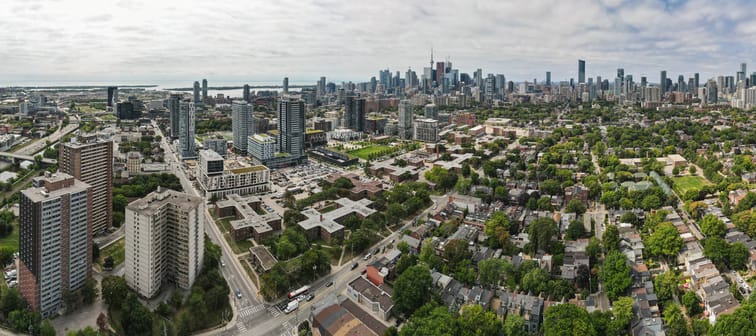What’s in the task force’s report?
The task force estimates Ontario can add 1.5 million homes to the province’s housing stock over the next ten years by following a series of 55 recommendations, which fall into five main areas:
Change planning policies and zoning regulations so they allow for both greater density and a wider variety of housing. This would involve allowing for more rental suites in single-family homes, transforming underused commercial and industrial buildings into residential properties and building more mid- and high-rise housing near transit lines.
Streamline urban design rules, which will lower development costs and the cost of new homes. Currently, municipalities need to give their approval over granular design aspects like a building’s colour or texture. Doing away with these processes will also help speed up development.
Eliminate the kinds of red tape and politicization that can slow housing development at the local level. When residents pushing back against local development collide with politicians eager to keep their jobs, the approval process for high-density new buildings can come to a standstill.
Tackle the backlog of cases awaiting decisions at the Ontario Land Tribunal and prioritize those that increase housing. The Tribunal’s backlog includes more than 1,000 cases, many of which are the result of development opponents filing appeal after appeal.
Incentivize development. Municipalities that are proactive in increasing housing supply should be rewarded with increased funding, while those that don’t should have their funding reduced.
The report has already received praise from various stakeholders.
“This can be the turning point for Ontario to end the housing crisis, provided the provincial government moves quickly to implement this report’s major recommendations", says Jacob Dawang, a volunteer with housing advocacy group More Neighbours Toronto.
The Ontario Real Estate Association was slightly more effusive, with president David Oikle calling the recommendations “precisely the kind of action” Ontario’s young families and millennials require to get into homes of their own.
Unexpected vet bills don’t have to break the bank
Spot Pet Insurance offers coverage for treatment of accidents, illnesses, prescriptions drugs, emergency care and more.
Plus, their preventative care plan covers things like routine check-ups, microchip implantation, and vaccinations, if you want to give your pet the all-star treatment while you protect your bank account.
Get A QuoteWill homes become more affordable?
As the average home price in the province threatens to cross a dispiriting threshold, this is literally the $1 million question.
Adding 150,000 new housing units a year to the provincial housing supply, the pace required to hit the report’s 1.5 million-unit target over the next decade, would require doubling the current pace of construction. It would undoubtedly take some of the pressure off of the market.
Also on Money.ca:
- 4 reasons to skip your RRSP this year
- Unconditional offers on homes are now the norm, but they could cost you big
- Nearly 3 in 10 Canadians say they keep a bank account secret from their significant other
But falling prices may actually be counterproductive to getting more homes built, says John Pasalis, president and broker of record at Realosophy Real Estate.
“If that was to happen, builders would stop building,” Pasalis says. “Builders are slow to drop their prices to follow the resale market. They're more likely to stop building and to wait for prices to catch up to where they were before a decline.”
And that’s if home prices were to decline. That’s not something home buyers should expect or hope for, says Bosley Real Estate’s David Fleming.
In his opinion, if prices were to go down at this point, it “would trigger the largest recession of all time. And the government's not going to let that happen.”
Fleming adds that the recommendations in the Task Force’s report are an echo of what he and other concerned market observers have long been saying.
“Write it down and send it to 10 years ago,” he says.
While Ontario has never added 150,000 housing units in a single year, Phil Soper, president of Royal LePage, feels it’s too early to call the target unreasonable. Ontario’s builders and developers, Soper says, have never operated in an environment free of the red tape the Task Force hopes to eliminate.
“We throw artificial bureaucratic roadblocks up that make it impossible to understand what the capacity to build is,” he says, pointing out that there have been instances in the past 40 years where Ontario experienced 100% year over year increases in the volume of homes being built.
Still, an immediate solution to the province’s housing woes should not be expected.
“You've got to point the supportive policies in the right direction, get on a path to solving this problem and every year look to improve,” Soper says.
A years-long, gradual increase in supply is not going to provide much comfort for Ontario’s home buyers this year or next. But it may be the best they can hope for.
Trade Smarter, Today
Build your own investment portfolio with the CIBC Investor's Edge online and mobile trading platform and enjoy low commissions. Get 100 free trades and $200 or more cash back until March 31, 2025.






